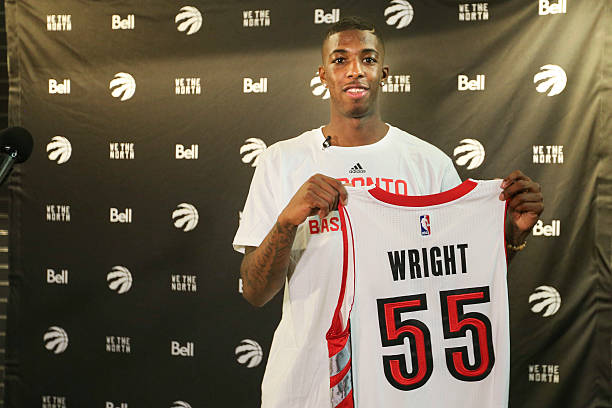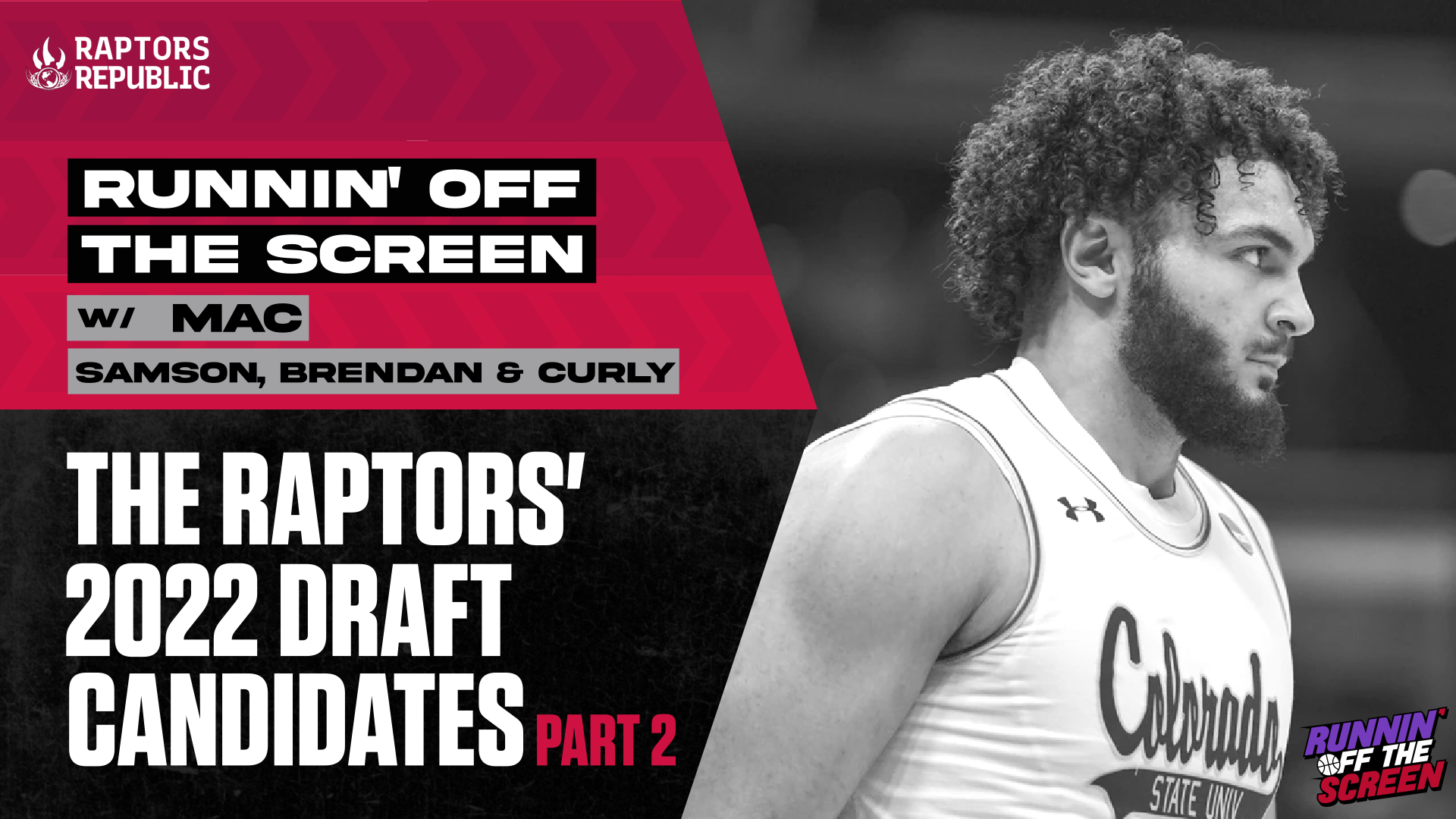With the 2022 NBA draft approaching on June 23rd, we want to take a look back at the Raptors draft history; giving a bit of an accounting of the state of the Raptors, what we thought of the pick in the moment and in retrospect. Each day we will examine the Raptors significant pick(s) and additions in each draft, and frame it in the context of what was going on during that year. You can find all the pieces in this draft history project here.
The State of The Raptors Heading Into The Draft
There was a weird vibe coming into the season. After a disappointing loss to the fucking Nets, Masai opted to run things back by doubling down on the current core.
After coming off the best season of his career, Lowry got rewarded with a very team friendly four-year/$48m deal. Greivis Vasquez and Patrick Patterson both got re-up’d, snagging three-year/$16m and three-year/$18m deals respectively. What was surprising, though, was the three-year extension Dwayne Casey was handed.
With how well the Raptors played last season, there was no chance the team would have fired him mid-season. However, some of the suspect in-game management he displayed against Brooklyn had us thinking this was Ujiri’s chance to bring in his own guy; as a new GM normally does. Ok, continuity is the name of the game; I dig. Ujiri builds slowly (until he doesn’t), but we didn’t know that at the time.
The season itself told a tale of two teams: the good and the meh.
The good Raptors were offensively potent and ran the other team off the floor. They carried over the chemistry from last season and took advantage of a schedule heavy with home games. Teams would try to go bucket for bucket but were neither as deep as the Raptors nor had the personnel to go toe-to-toe. They caught opponents completely unprepared with a weirdly efficient iso-heavy brand of basketball going 24-7.
DeMar tore a tendon in his left leg and was out a month. Luckily the Raptors were able to endure for about half those games with the schedule easing, playing weaker teams, but eventually, the balance they enjoyed started to get discombobulated when the home-heavy schedule broke the other way and the quality of opponents improved.
The meh Raptors were frustrating and perplexing. Teams figured out how to exploit the short-manned squad by slowing the pace and attacking the defense. While the Raptors were still able to score, as the season dragged on it worsened behind a parade of injury, fatigue, and an inability to adjust eroding their offensive consistency.
We became a high-efficiency offensive team, how I don’t know, because playing that up-and-down, quick shots basketball is not conducive to championship basketball, said Casey.
We had an identity playing that way, we were winning, but in the back of my mind I knew it wasn’t going to be successful.
Great. Thanks, Casey!
Lowry was able to admirably carry a heavier load with DeRozan out, and he was voted as a starter for the East in the All-Star game for his troubles, but the heavy load took a toll on his back, and he missed a few weeks as the season was winding down. We hoped it was a bit of a blessing in disguise as a playoff birth was already wrapped up, but the momentum heading into the playoffs was trending in the wrong way with the team finishing the season 13-16 after the All-Star break.
They finished first in the Atlantic and fourth in the East, drawing the Wizards in the first round. The Raptors were 3-0 against the Wizards in the regular, beating them once decisively early in the season but grinding out the others later on.
Paul Fucking Pierce started the mind games early, telling anyone who would put a mic in his fucking irritating face that the Raptors “don’t have the ‘IT’ that makes you worried.” Shut up, you fucking….
…he was right, the Wizards had complete control of almost every moment of every game, sweeping the Raptors rather easily, frustratingly, and depressingly. There’s really nothing else to say. It was embarrassing; we were embarrassed for real.
So what went wrong?
Let’s put the DeRozan and Lowry injuries aside; a team can’t have its two best players miss significant time and expect everything to be alright.
Casey had a weird relationship with JV, who was improving year to year at this point. The iso-heavy offense didn’t work at all with JV on the floor. Perimeter players would routinely wind down the shot clock and heave something. Pick and roll? Sure, that happened on occasion, but he didn’t have three point range just yet, so the roll was always expected, and teams would adjust.
Defensively the Raptors were better when JV was on the bench, and Casey liked going smaller in the fourth with Patterson, who shot better from the corner (gave spacing) and played much better defense especially when it came to switching. This all added up to stunted development as JV wouldn’t see crunch time minutes; it was a chicken-and-the-egg situation.
Ross? He could shoot the three, but he provided so little value anywhere else we questioned his desire to play basketball.
Lou Will got all the iso looks he wanted, and he was the avatar for this team. Like Ross, he provided little value outside of his scoring, and the most interesting thing about him was his sister-wives. The man remains an icon in the NBA, with younger players treating him as a major celebrity when they first meet him, and he was beloved in the locker room. But he didn’t drive winning with all his buckets.
James Johnson didn’t get enough minutes, Greivis took a step back, and everyone else was a role player.
The lack of a real offensive system, suspect rotations, lack of size, Masai sitting pat at the trade deadline. There was no attempt at adapting throughout the system and the league caught on.
From a roster perspective, notable moves included:
July 10, 2014
Traded Steve Novak and a 2017 second-round draft pick (Jonah Bolden was later selected) to the Utah Jazz for Diante Garrett.
- Salary dump
July 15, 2014
Signed James Johnson to a multi-year contract.
- Good signing, did good things when he got playing time, but he didn’t get enough playing time.
June 25, 2015
Traded Greivis Vásquez to the Milwaukee Bucks for Norman Powell and a 2017 first-round draft pick (OG Anunoby was later selected).
- What a trade, wow. Bucks were desperate for a point guard, and bought super high on Greivis (who was out of the league two seasons and 26 games later). Another grand theft by Masai. This is right up there for best trades in Raptors history. Not first or second, but you could argue anywhere after that.
The Draft

This draft produced four All Stars and 11 useful players. Pretty bleh. This was the first draft that I had no opinion and wasn’t really focused on since we had our second kid a couple months prior, and I missed all of March Madness and a ton of regular season college games.
The point was a position that needed love, so when Delon got snagged we went on YouTube deep dives to get a sense of things.
https://www.youtube.com/watch?v=dC_BS35Ag0Y
Not really inspiring, but reviewing game footage, Delon could score and create off the bounce. He had length, athleticism, and really good court vision, and his brother (Dorrell Wright) was in the NBA. Ok…
The real win came in the second round, where Milwaukee drafted Norman Powell, and Masai snagged him (and a first that would later become OG) for Greivis. Norm was a senior out of UCLA, could score and defend, and cool — I thought as my wife yelled at me to get diapers and handle a poopy situation…
In The Moment
The Raptors were seemingly a playoff team in the East, and the expectation that a pick in the 20s, much less a second rounder, would move the needle just wasn’t there. We were hoping Delon and Norm could add some depth and utility to the bench, but the excitement was focused around the additional first rounder in 2017.
By this point, team front offices were more sophisticated with respect to asset management, and a 1st rounder had value. Maybe the Bucks slip and it becomes a lottery pick. Maybe a good player becomes available, and we can package it for him. Whatever the case, the pick gave us future flexibility and optionality. Three cheers to normal team building!
What It Meant for the Raptors
We’re getting to the stage where every player selected had an integral hand in the championship, either as a player (Norm!) or as trade fodder (Wright for Gasol!). They both contributed to plenty of winning ball before that, of course. They were critical components to the Bench Mob in 2017-18 when Wright and Powell were joined by Fred VanVleet, CJ Miles, Pascal Siakam, and Jakob Poeltl (Powell and Miles subbed for each other). They both played low-turnover, smart basketball. Wright was a funky player while Powell was a no-nonsense athlete at the wing, and teams can always use guys like that.
In a broader sense, the Raptors were at a stage where almost everyone they selected at this point was a contributor almost right out of the gate. It’s easy to build a winning team when you only have winning players. And Wright and Powell fit into that category. They gave the Raptors plenty of winning hoop, and then they were traded for Marc Gasol and Gary Trent jr. — helping provide a championship and the team’s future (now the present) in the process. That’s a whole more than than can expect from these positions in the draft. Great stuff all around.




